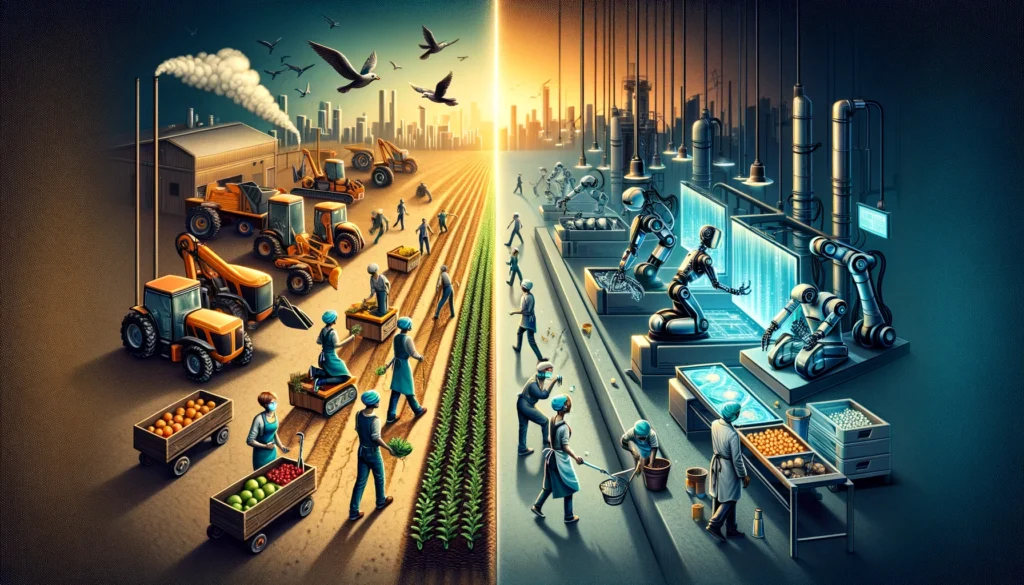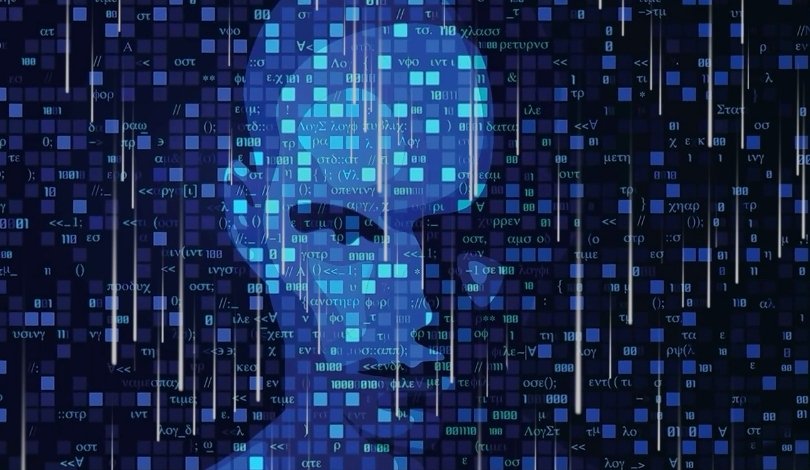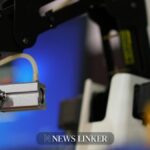Robotics is an interdisciplinary field encompassing the design, construction, and utilization of mechanical robots. It combines science, engineering, and technology to create machines known as robots, programmed to replicate or assist humans in various tasks. These robots have a rich history, dating back to ancient Greece, but the modern era saw the emergence of digital-operated and programmable robots in the mid-20th century. Initially, robots were employed in industries such as automotive manufacturing, revolutionizing processes like spot welding in 1961. Today, robots are ubiquitous, serving diverse industries globally.
The primary objective of robotics is to develop machines that can aid and support humans. They excel in hazardous, monotonous, or unpleasant tasks, including search and rescue missions, space exploration, and repetitive assembly line work. Robotics has evolved significantly, incorporating artificial intelligence and the replication of human senses like vision and touch. Research in robotics aims to create robots with autonomy and adaptability in unstructured environments. While industrial robots do not resemble humans, androids are robots designed to mimic human appearance and behavior.
Robotics technology includes computer systems for control, sensory feedback, and information processing. It has been driven by the need for automation in tasks without human intervention and the desire to replicate human intelligence. The field spans from simple machines for repetitive tasks to advanced robots capable of learning and decision-making. This convergence of science, engineering, and technology defines the realm of robotics and its multifaceted applications.
How Does Robotic Technology Work?
Robotic technology operates through a combination of sensors, actuators, and computer programs. Sensors allow robots to perceive their surroundings, while actuators facilitate movement and interaction. A robot’s “brain” is a computer program controlling these elements.
Similar to humans, robots have five major components: a physical structure, muscle system (motors), sensory system, power source (usually electricity), and a computer system for processing information and directing actions. These components enable robots to mimic human and animal behavior.
Robots encompass a wide variety, from humanoid robots to industrial machines and even vacuum cleaners like the Roomba. What defines a robot is its reprogrammable computer “brain” guiding its actions.
Robots consist of hardware (body, motors, sensors, and energy source) and software (programs that control them). Hardware varies based on the robot’s type, while sensors collect environmental data for processing.
Energy, usually electricity, powers robots. Software controls robot operations and can be hard-wired, remotely updated, or even developed from scratch. AI plays a growing role in robotics, with computer vision, audio processing, and natural language understanding enhancing robot capabilities.
AI-driven robots can analyze images, recognize objects and people, process audio data, and even communicate with humans using advanced algorithms. Predictive maintenance and adaptability to different environments are also AI applications in robotics. Future developments promise even more intelligent robotic solutions as AI and robotics continue to evolve.
Which Technology is Used in Robotics?
In the field of robotics, various technologies are employed to enhance robot capabilities and functions. Two key areas of impact in modern robotics are autonomy and context awareness. The following technologies are being utilized in robotics:
- Artificial Intelligence (AI) and Machine Learning: AI plays a significant role in robotics innovation. Machine learning techniques, including deep learning, reinforcement learning, and neural networks, enhance robot perception, decision-making, and control.
- Computer Vision: This technology utilizes Convolutional Neural Networks and OpenCV to enable robots to “see” and interpret their surroundings. It is crucial for tasks like object recognition and navigation.
- Natural Language Processing (NLP): NLP is used for voice commands and human-robot interaction. It enables robots to understand and respond to verbal instructions.
- Edge Computing: Instead of relying solely on cloud-based processing, edge computing allows robots to perform data processing near the data source. This is vital for applications like autonomous cars and drones.
- Complex Event Processing (CEP): CEP combines data from multiple sources to infer complex events quickly. It’s used in robotics for tasks like event processing in autonomous robot programming.
- Transfer Learning: This technique reuses knowledge gained from solving one problem to solve related problems. It’s valuable for robotics, especially when robots need to adapt to new tasks.
- Hardware Acceleration for AI: Emerging hardware accelerators at the microprocessor level are improving AI applications in robotics.
- Reinforcement Learning: Reinforcement learning provides a framework for designing sophisticated robot behaviors. It’s akin to teaching robots to learn from their experiences.
- Generative Adversarial Networks (GANs): GANs are used to generate better data, especially for tasks like image recognition in robotics training.
- Mixed Reality: Mixed reality combines physical and virtual objects, often used in programming by demonstration (PbD) for robotics development.
- Emotion Research (Affective Computing): Affective computing allows robots to recognize, interpret, and simulate human emotions, enabling empathy in AI systems.
- These technologies collectively contribute to the advancement of robotics, making robots more autonomous, context-aware, and capable of performing various tasks. These innovations are shaping the future of robotics, enabling them to excel in diverse industries and applications.
What is the Main Idea of Robotics?
Robotics, a rapidly advancing field in the past half-century, focuses on creating automated machines, known as robots, capable of performing tasks with minimal human intervention. These tasks are executed with remarkable speed and precision. The core of robotics involves the design, engineering, and operation of these robots, integrating control systems, sensory feedback, and information processing.
Robots interact with the physical world through sensors and actuators, processing information to carry out their functions. Essentially, robotics bridges the gap between sophisticated machine design and real-world applications, emphasizing automation and efficiency in various tasks.
Why is Robotics Used?
Robotics is employed to enhance efficiency, safety, and service levels in various fields by performing tasks better than humans, particularly in repetitive, hazardous, or intricate situations. Robots excel in automating manual tasks in industries and can operate in dangerous environments, such as detecting gas leaks or performing delicate surgeries, where they surpass human capabilities in precision and consistency.
Advances in robotics and AI are revolutionizing business and society, notably in extreme environments, agriculture, infrastructure monitoring, and transport. Robotics also plays a critical role in social care and healthcare, improving patient outcomes and aiding the elderly and disabled. Furthermore, robotics integrates technologies like sensor miniaturization and augmented reality, leveraging space assets to expand its capabilities. Overall, robotics is key to transforming work practices, raising safety standards, and underpinning a new generation of autonomous devices, significantly impacting global sales and Europe’s competitiveness in various sectors.
Why is Robotics Important in the Future?
Robotics is pivotal for the future due to its transformative impact on various sectors. Robots excel in hazardous environments, reducing human risk in tasks like fire fighting or nuclear reactor work. They’re cost-effective, not requiring typical employee benefits, and boost productivity by handling repetitive tasks tirelessly. In healthcare, robotics is evolving to perform complex surgeries with precision, enhancing patient recovery. In industries like manufacturing, robotics is reshaping operations by automating processes, leading to greater efficiency.
Robotics also has significant roles in logistics, military, space exploration, and household chores, making everyday tasks more manageable and safer. Additionally, robotics drives innovation in other fields and creates new job opportunities by replacing mundane tasks with high-skill roles. The integration of AI in robotics is pushing boundaries towards more intelligent machines, signaling a future where robotics will be integral in enhancing human life and work.
What Robots Can Do?
Robots have evolved to perform a wide range of tasks in various environments, demonstrating their versatility and growing impact on human life. Here’s a summary of what robots can do:
- Cooking: Robots like Moley Robotics’ Robotic Kitchen can choose recipes from a library and handle all aspects of cooking, from ingredient measurement to baking and stirring.
- Speed and Agility: MIT’s mechanical cheetah robot can reach speeds close to 30 mph, aiding in search and rescue operations in challenging terrains.
- Aerial Tasks: Drones, also considered robots, perform tasks worldwide, from delivering medical supplies to monitoring coastlines for safety.
- Custom Eyeglasses: Robots can turn numerical prescriptions into prescription eyeglasses in under an hour.
- Pharmaceutical and Medical: Robots assist in pharmaceutical processes and can be found in pharmacies and hospitals, streamlining tasks like IV preparation.
- Music Creation: Brain.fm’s music, designed by robots, synchronizes with brainwaves to create captivating beats.
- Fitness Training: Personal trainer robots lead exercise sessions, monitor participants, and ensure proper body positioning, especially for the elderly.
- Emotional Intelligence: Companion robots like Pepper can read facial expressions and respond with appropriate songs and supportive comments.
- Delivery Services: Robots are used for delivering a wide range of items, from online orders to room service in hotels.
- Surgery: Medical facilities employ robotics for surgeries, enhancing precision, flexibility, and control compared to conventional techniques.
- Education: Robots like Botley the Coding Robot help introduce programming concepts to children.
- Safety in Hazardous Environments: Robots perform tasks in dangerous environments such as nuclear power plants and underwater, protecting human workers.
- Time-Saving and Productivity: Robots handle repetitive tasks, freeing up time for more critical activities.
- Accessibility: Robots assist individuals by carrying heavy objects or aiding in mobility, similar to wheelchairs.
- Surveillance: Robots equipped with cameras provide access to otherwise inaccessible or risky locations.
- Companionship: AI-powered robots offer social interaction, reducing loneliness for people living alone.
- Operation of Systems: Robots improve the operation of systems like computer networks and electrical grids, enhancing productivity and response times.
- Reduced Human Errors: Robots ensure accuracy in various tasks, reducing the likelihood of human errors.
- Manufacturing: Industrial robots excel in tasks that require speed, precision, and endurance, contributing to manufacturing processes.
- Entertainment: Entertainment robots, including animatronic toys and characters, provide amusement and relaxation for audiences.
- Educational: Educational robots help students learn about machines and robotics in a safe and controlled environment.
How Robotics is Changing the World?
Robotics is revolutionizing the world in various ways. Firstly, robots are boosting productivity by taking on repetitive tasks, allowing humans to focus on more complex endeavors. In the future, up to 30% of jobs could be automated by robots, and the global stock of robots may reach 20 million by 2030. This will lead to changes in the job market, with a shift towards more technological and socioemotional skills.

In daily life, robots are becoming more integrated, automating tasks like cooking and cleaning. They’re also enhancing fields like medicine with precise surgical operations. Moreover, robots that can adapt and learn are poised to tackle complex tasks.
While the rise of robots will boost productivity and create new industries, it will also disrupt existing business models and lead to job losses, particularly in manufacturing. These effects will vary by region, impacting lower-skilled workers and local economies.
In the industrial sector, AI is improving human-robot collaboration with co-bots. AI enables robots to mimic human behavior, identify objects, manipulate them delicately, navigate autonomously, and understand natural language, making them more efficient in various tasks. This convergence of technology is transforming the capabilities of robots, changing the nature of work, and raising questions about the future of jobs and economic shifts.
How Does Robotics Use AI?
AI plays a crucial role in robotics, primarily through machine learning, enabling robots to learn tasks by observing and mimicking human actions. This technology grants robots computer vision capabilities, helping them navigate, detect objects, and react accordingly.
The robotics industry has evolved significantly since the 1960s, with a substantial impact on manufacturing. Currently, there are nearly 3 million industrial robots worldwide, with approximately 400,000 new robots entering the market annually. These robots are mainly used in manufacturing, assembling vehicles, electronics, and military equipment.
AI in robotics aims to create intelligent automation, incorporating computer vision, intelligent programming, and reinforcement learning to make robots capable of human-like decision-making in dynamic situations. Key use cases of AI in robotics include:
- Healthcare: AI robots assist in surgery, patient monitoring, and medication delivery, enhancing healthcare efficiency.
- Manufacturing: AI-powered robots perform precise tasks like assembly, welding, and quality inspection, improving production processes and reducing errors.
- Agriculture: Robots equipped with AI and computer vision automate tasks like fruit picking, crop harvesting, and weed control, increasing efficiency in farming.
- Transportation: Self-driving cars, equipped with AI and robotics, use sensor data and computer vision for safe navigation.
- Smart Home Appliances: AI robots like Amazon’s Astro assist with household tasks, security, and remote monitoring.
In these sectors, AI-enhanced robotics improve precision, safety, and efficiency, marking a significant advancement in automation and technology integration.










